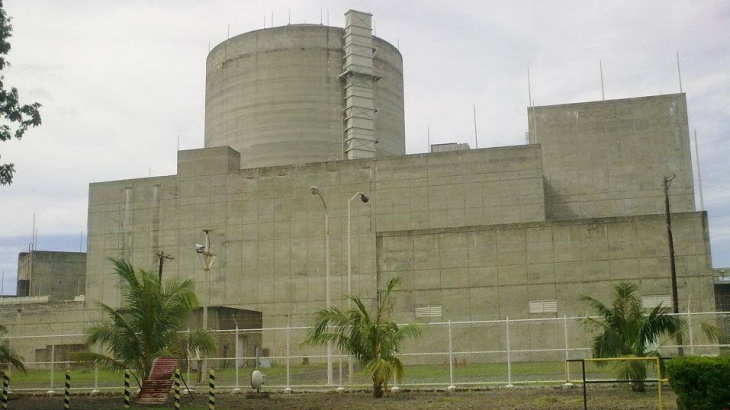The feasibility study is part of a memorandum of understanding on cooperation in the field of energy signed between the Philippine Department of Energy (DOE) and Korea Hydro & Nuclear Power (KHNP). Its signing on 7 October at the Malacañan Palace in Manila was witnessed by Philippine President Ferdinand Marcos and South Korean President Yoon Suk Yeol.
In response to the 1973 oil crisis, the Philippines decided to build the two-unit Bataan plant. Construction of Bataan 1 - a 621 MWe Westinghouse pressurised water reactor - began in 1976 and it was completed in 1984 at a cost of USD460 million. However, due to financial issues and safety concerns related to earthquakes, the plant was never loaded with fuel or operated. The plant has since been maintained. There have been several proposals over the years to either start up the plant or convert it to a gas-fired plant.
"Korea, which has a long-standing familiarity with the Bataan Nuclear Power Plant due to studies conducted in 2008 and 2017 by Team Korea composed of KHNP, KEPCO KPS and Doosan Heavy Industries & Construction, will collaborate with the DOE to conduct a comprehensive technical and economic feasibility study on the potential rehabilitation of the BNPP," DOE said in a statement.
All costs associated with the feasibility study will be fully borne by KHNP while the Philippine government is under no legal obligation to proceed with the rehabilitation of the plant or to engage KHNP based on the study's findings.
"The study is exploratory in nature, and any subsequent actions will be subject to further evaluation and decision by the government," DOE noted.

The mothballed Bataan plant (Image: Jiru27/Wikimedia)
The feasibility study, set to begin in January 2025, will be carried out in two phases. The first phase will assess the current condition of the plant and its components while the second phase will evaluate whether the plant can be refurbished using "the most optimal model".
"Should the findings from the first phase determine that proceeding to the next phase is not advisable, KHNP may recommend alternative options, including the construction of a conventional plant or the development of a small modular reactor," DOE said. "These alternatives will be presented as viable paths forward, offering flexibility in advancing the country's nuclear energy agenda, based on the results of the initial phase."
"The signing of this MoU builds on the strong foundation of energy cooperation between the two countries," said Energy Secretary Raphael Lotilla. "For the Philippines, it is a continuation of our efforts to enhance energy security, as outlined in the Philippine Energy Plan (PEP)."
In March 2022, then President Rodrigo Duterte signed an executive order that outlines the government's position for the inclusion of nuclear energy in the Philippines' energy mix, taking into account economic, political, social and environmental objectives. The country aims to have its first nuclear power plants operational by 2032, with an initial capacity of 1200 MW, expanding to 2400 MW by 2035 and reaching 4800 MW by 2050, as outlined in the PEP.

_60627.jpg)



_47120.jpg)

_23621.jpg)






